On the 34th anniversary of the introduction of Apple Lisa, we look at the tech giant's many products from the beginning till the present time that went on to make it a household name...

Apple Lisa
The beginning...
Apple I: The first ever technological endeavour by Apple, the Apple I kits were computers single handedly designed and hand-built by co-founder Steve Wozniak, who demonstrated it at the Homebrew Computer Club. Consisting of a motherboard with CPU, RAM, and basic textual-video chips it went on sale in July 1976 at a market price of USD 666.66.
ADVERTISEMENT
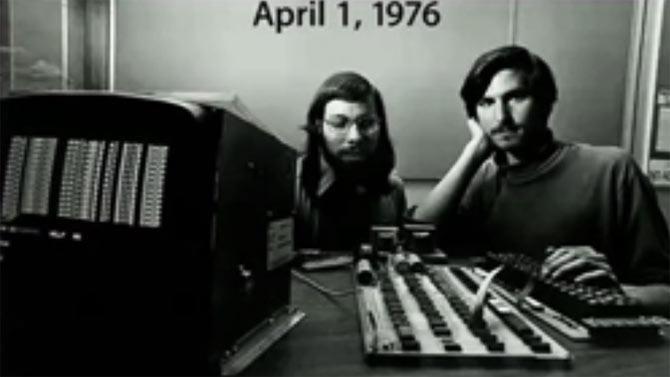
Apple co-founders Steve Wozniak and Steve Jobs, (below) the Apple I. Pics/YouTube
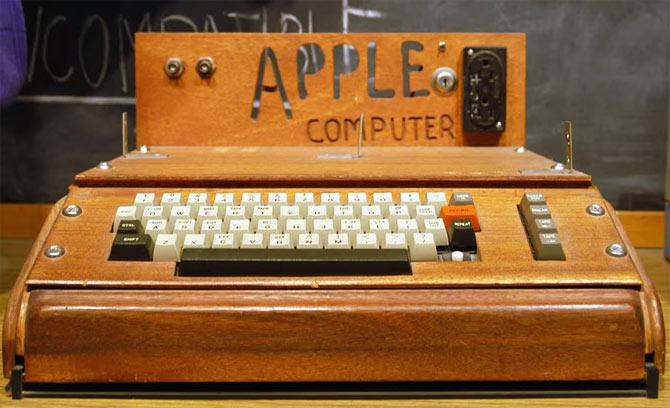
The Apple 1 was actually sold as an assembled circuit board and lacked basic features such as a keyboard, monitor, and case. The owner of the unit pictured here added a keyboard and a wooden case.
Apple II: Another invention of Steve Wozniak, the Apple II was introduced on April 16, 1977, at the first West Coast Computer Faire. Its character cell-based color graphics and open architecture set it apart from major rivals, the TRS-80 and Commodore PET.
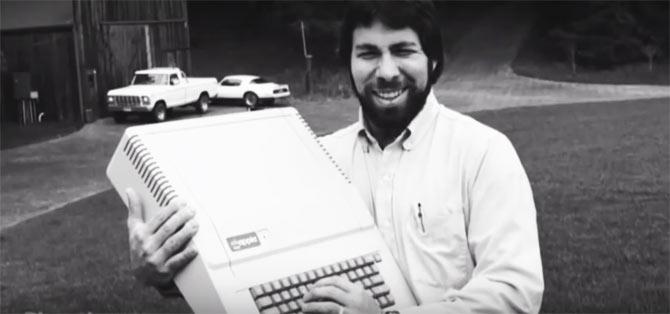
An undated image of Apple co-founder Steve Wozniak. Pic/YouTube
While early Apple II models used ordinary cassette tapes as storage devices, they were superseded by the introduction of a 5 1/4 inch floppy disk drive and interface called the Disk II, which was designed by Steve Wozniak as a means to replace the slower cassette tape storage and cannot be used with any Macintosh computer without an Apple IIe Card as doing so will damage the drive or the controller. VisiCalc, a spreadsheet program, created a business market for the Apple II and gave home users an additional reason to buy an Apple II: compatibility with the office. Before that Apple had been a distant third place competitor to Commodore and Tandy.
Apple III: It was introduced on May 19, 1980 in an attempt to compete with IBM and Microsoft. The product was largely considered a failure in the market as it required a design overhaul and a recall of existing machines due to serious stability issues that led the Apple III to be formally reintroduced in the autumn of 1980. Development stopped and the Apple III was discontinued on April 24, 1984, and the III Plus was dropped from the Apple product line in September 1985.
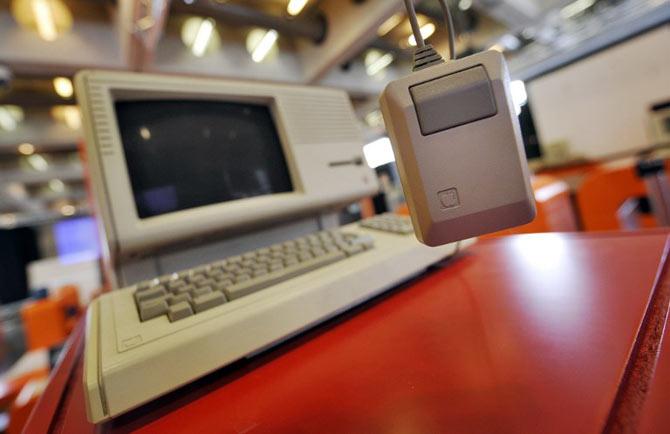
The Apple Lisa. Pic/AFP
Apple Lisa: The Apple Lisa was the first personal computer to offer a graphical user interface in a machine aimed at individual business users. The Lisa featured protected memory, cooperative multitasking, a generally more sophisticated hard disk based operating system, a built-in screensaver, an advanced calculator with a paper tape and RPN, support for up to 2 megabytes (MB) of RAM, expansion slots, a numeric keypad, data corruption protection schemes and a larger higher-resolution display. Despite this, the Lisa sold poorly, with only 100,000 units sold.
Success with the Macintosh...
Apple Macintosh: Apple introduced the first Macintosh computer on January 24 in 1984 as the first personal computer intended for the mass consumer market. It stood out for featuring the an integral graphical user interface and mouse. Users communicated with the computer, using a metaphorical desktop that included icons of real life items, instead of abstract textual commands.
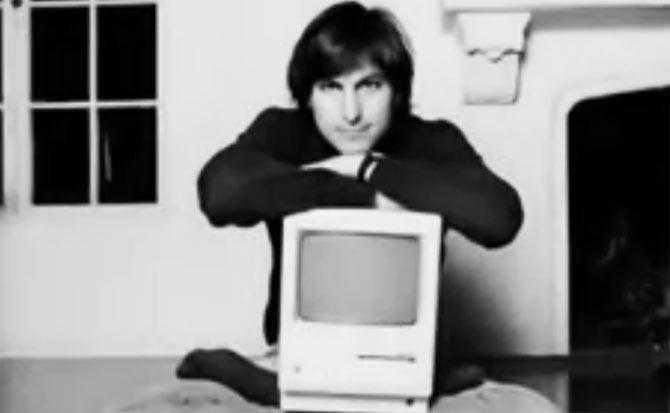
An undated image of a young Steve Jobs posing with an Apple Macintosh. Pic/YouTube
The now-famous Ridley Scott directed Television commercial named '1984', which is considered Apple's watershed moment was made to market the Macintosh. Costing a whopping 1.5 million to make, it featured an unnamed heroine to represent the coming of the Macintosh as a means of saving humanity from the "conformity" of IBM's attempts to dominate the computer industry and alluded to author George Orwell's famous novel Ninteen Eighty-Four. (Read more about the Macintosh)
Macintosh Portable: The Macintosh Portable was Apple's first "portable" Macintosh computer, released in 1989. It featured a fast, sharp, and expensive black and white active matrix LCD screen in a hinged design that covered the keyboard when the machine was not in use. The Portable was one of the early consumer laptops to employ an active matrix panel, and only the most expensive of the initial Powerbook line, the Powerbook 170, used one, due to the high cost. The cursor pointing function was handled by a built-in trackball that could be removed and located on either side of the keyboard. It used expensive SRAM in an effort to maximize battery life and to provide an "instant on" low power sleep mode. The machine was designed to be high-performance, at the cost of price and weight. Although it was received with excitement from most critics but consumer sales were quite low.
Apple goes beyond computing...
iPod: Apple debuted its digital music player, the iPod on October 23, 2001. It became phenomenally successful after sales began on November 10 of the same year. Over 100 million units were sold within six years. Apple introduced the iTunes Store in 2003, which offered offered online music downloads for $0.99 a song and integration with the iPod. The iTunes store quickly became the market leader in online music services, with over 5 billion downloads by June 19, 2008.
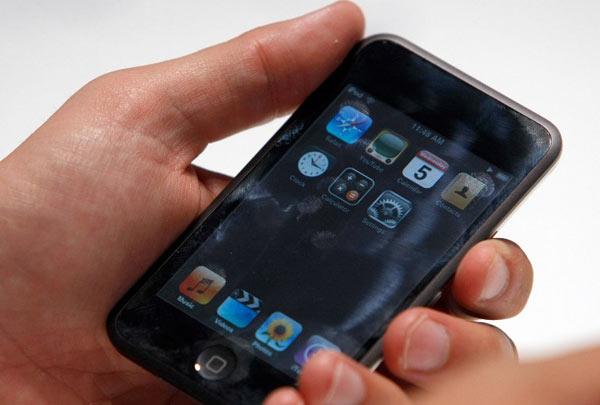
An attendee holds the iPod Touch at an Apple Special event on 5th September 2007 in San Francisco, California. Pic/AFP
Several updated models have since been introduced, and the iPod brand is now the market leader in portable music players by a significant margin. Apple has partnered with Nike to offer the Nike+iPod Sports Kit, enabling runners to synchronize and monitor their runs with iTunes and the Nike+ website.
The Apple iPod has three current variants namely...
iPod Shuffle: A small ultra-portable digital audio player with 2GB storage capacity, which was introduced in 2005.
iPod Nano: Portable media player with 16GB storage, also introduced in 2005, currently features a multi-touch interface and includes an FM radio and a pedometer.
iPod Touch: Portable media player that runs iOS and was released on September 12, 2012 and is currently available in 16, 32 and 64 GB models. The current generation features the Apple A5 processor, a Retina display, Siri and dual cameras on the front (1.2 megapixel sensor) and back (5 megapixel iSight). The latter camera supports HD video recording at 1080p.
iMac: Apple introduced a new all-in-one computer reminiscent of the Macintosh 128K: the iMac on August 15, 1998. Its design team would later design the iPod and the iPhone. The iMac featured modern technology and a unique design, and sold almost 800,000 units in its first five months.
MacBook Pro: This high-end 15-inch laptop computer was released on January 10, 2006 during the Apple–Intel transition and thus became one of Apple's first computers along with the iMac to feature an Intel microprocessor. A 17-inch model was released in April, both of which received several updates and Core 2 Duo processors later in the year. A second model known as the 15-inch MacBook Pro and the 13-inch aluminum unibody MacBook, which contained a casing made from a single block of aluminum debuted in October 2008 followed by a 17-inch model, along with the built-in battery that joined the rest of the MacBook Pro line in June 2009, including the 13-inch model which Apple absorbed into the MacBook Pro line.
Apple released the third generation of MacBook Pro in June 2012 with a 15-inch screen. It's most substantial differences are the fitting of a significantly higher resolution Retina display, the elimination of the optical drive, and replacement of hard disk drives with solid-state drives. A 13-inch third generation MacBook Pro was released in October 2012.
The game changer...
iPhone: Steve Jobs unveiled the first iPhone at the Macworld conference on January 9, 2007. was released in the United States on June 29, 2007 and later made available in the United Kingdom, France, Germany, Portugal, the Republic of Ireland and Austria in November of the same year.
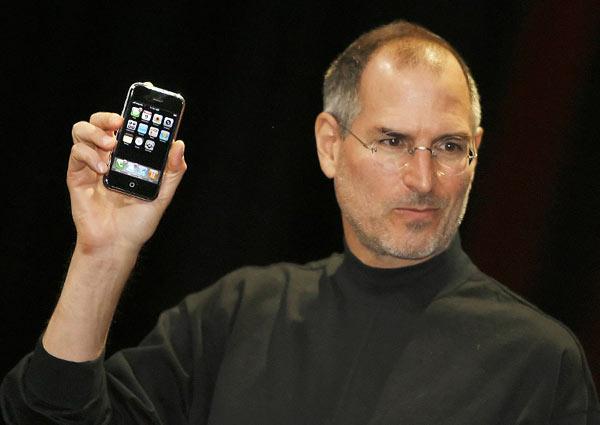
Apple CEO Steve Jobs unveils the iPhone at the Macworld Conference 09 January 2007 in San Francisco, California. Pic/AFP
Several tech consumers reportedly waited outside many Apple and AT&T retail stores days before the gadget's launch with many stores reporting stock shortages within an hour. Apple CEO Steve Jobs initially wanted to utilise a multi-touch touchscreen through which he could interact with a computer by typing directly onto the display in the same essence as a tablet computer. This would virtually remove the use of the physical keyboard and mouse. The iPhone made this possible. (Read more about the first iPod and following versions)
iPad: Apple introduced their media tablet, the iPad on January 27, 2010. It ran a modified version of the iOS and offered multi-touch interaction with many multimedia formats including, newspapers, ebooks, photos, videos, music, word processing documents, video games and exisiting iPhone apps. Content for the iPad is downloadable via Wi-Fi and optional 3G service or syncing through the user's computer. The mobile version of the browser Safari enables web browsing with access to the App Store, iTunes Library and other Apple-specific services. Since its launch, iPad users have downloaded three billion apps. The total number of App Store downloads is over 25 billion.

The iPad Mini 3 and the iPad Air 2. Pic/AFP
Apple unveiled the iPad 2, which had a faster-processor and a camera on the front and back on March 2, 2011, followed by the third-generation iPad, which was released on March 7, 2012 and was marketed as 'the new iPad' with an upgraded A5X processor and Retina display. The fourth-generation iPad, marketed as the 'iPad with Retina Display' came out on October 23, 2012, which added the upgraded A6X processor and replaced the traditional 30-pin dock connector with the all-digital Lightning connector.
The iPad Mini, featuring a reduced 7.9-inch screen was introduced later, which contained the same internal specifications of the iPad 2. The iPad Air and the iPad Mini with Retina Display were unveiled on October 22, 2013, with a new 64 bit Apple-A7 processor. The iPad Air 2 was unveiled on October 16, 2014. It added better graphics and central processing and a camera burst mode as well as minor updates. The iPad Mini 3 was unveiled at the same time.
Apple TV: Steve Jobs demonstrated the Apple TV, a digital media player and video streaming service at the 2007 Macworld conference. The device originally incorporated a 40GB hard drive for storage with HDMI outputs and component video and played video at a maximum resolution of 720p. The Apple TV links up to a user's TV and syncs, either via Wi-Fi or a wired network, with one computer's iTunes library and streams content from an additional four.
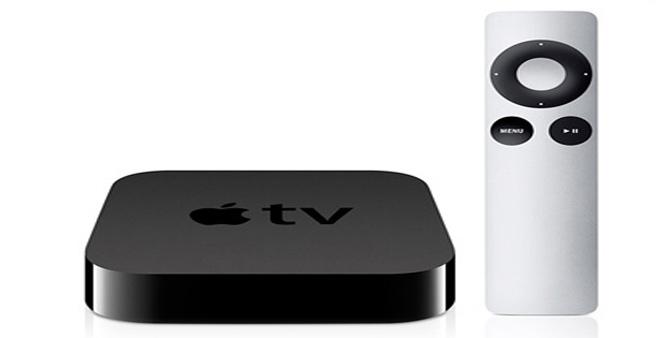
A 160 GB drive was released alongside the existing 40 GB model on May 31 2007 and media could be purchased directly from the Apple TV following a software update on January 15, 2008. The 40GB drive was discontinued on September 2009. A completely redesigned version was unveiled on September 1, 2010, which is 1/4 the size, runs quieter, and replaces the need for a hard drive with media streaming from any iTunes library on the network along with 8 GB of flash memory to cache media downloaded.
Running on the A4 processor, the Apple TV's features include access to the iTunes Store to rent movies and TV shows, streaming from internet video sources, including YouTube and Netflix, and media streaming from an iTunes library. A third generation with added features lke 1080p video resolution was unveiled on March 7 2012.
Apple Watch: Apple unveiled its entry in the smartwatch market, the Apple Watch on 9th March 2015. It is a high-end device that allows users to make and receive calls and messages and track health and fitness.
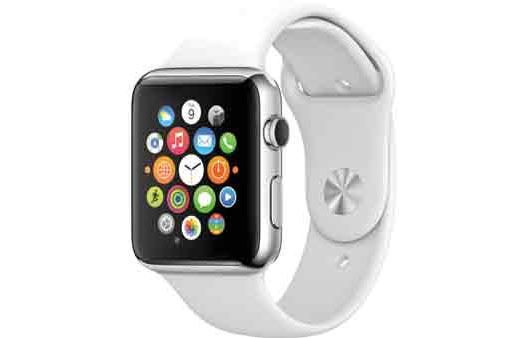
Connecting to the iPhone, the Apple Watch is designed as a wrist device for messaging and calls and for a variety of health tracking applications. The watch is also integrated with Apple Pay's mobile wallet, and can be used to view pictures and monitor news, and also connect to social media. (Know more about the Apple watch)
 Subscribe today by clicking the link and stay updated with the latest news!" Click here!
Subscribe today by clicking the link and stay updated with the latest news!" Click here!






